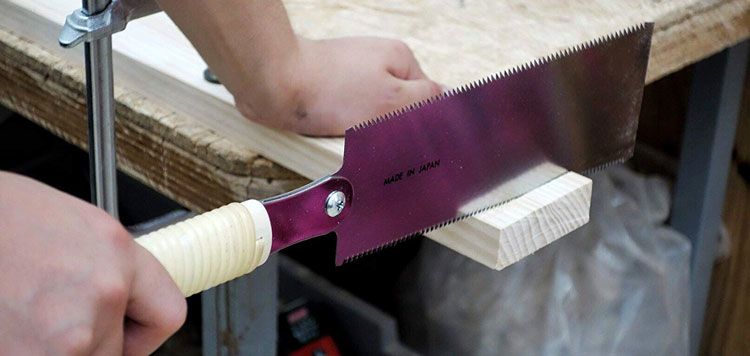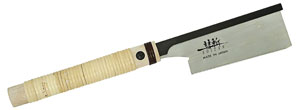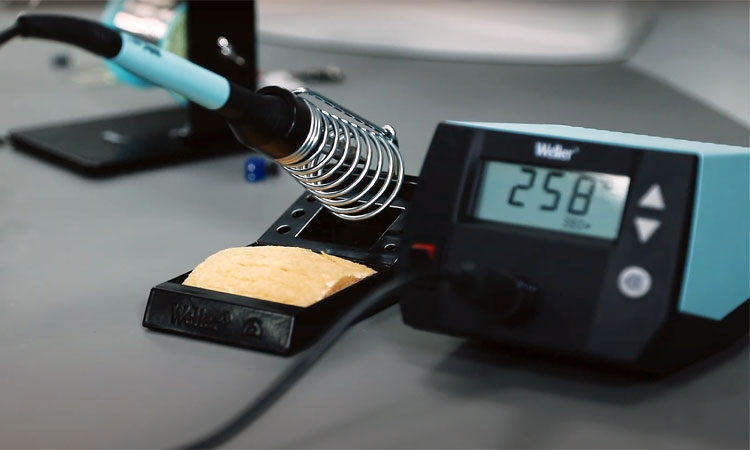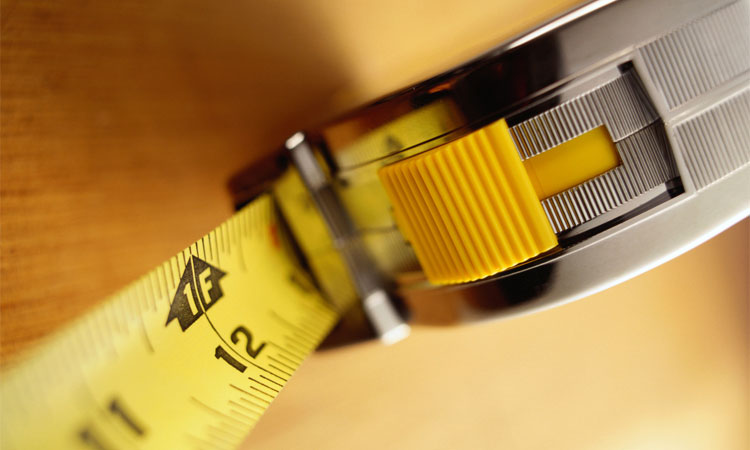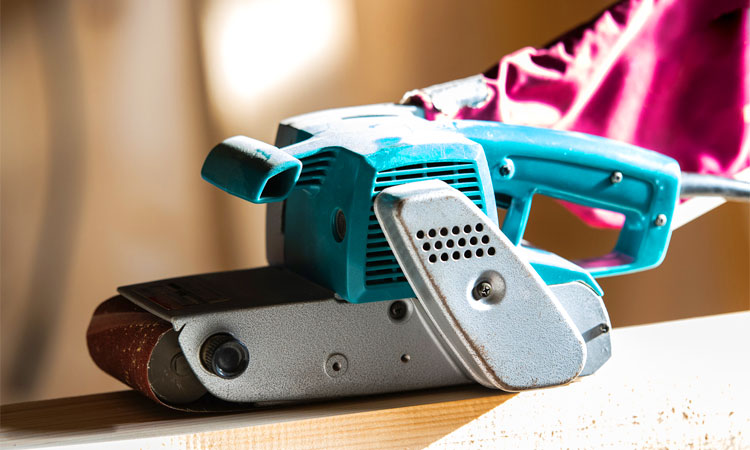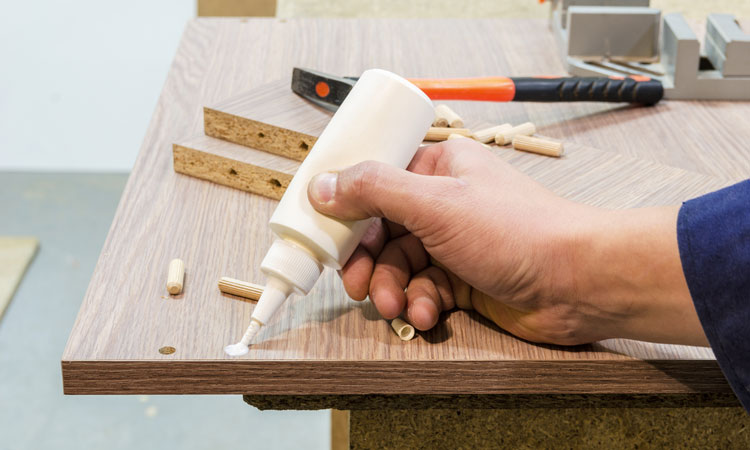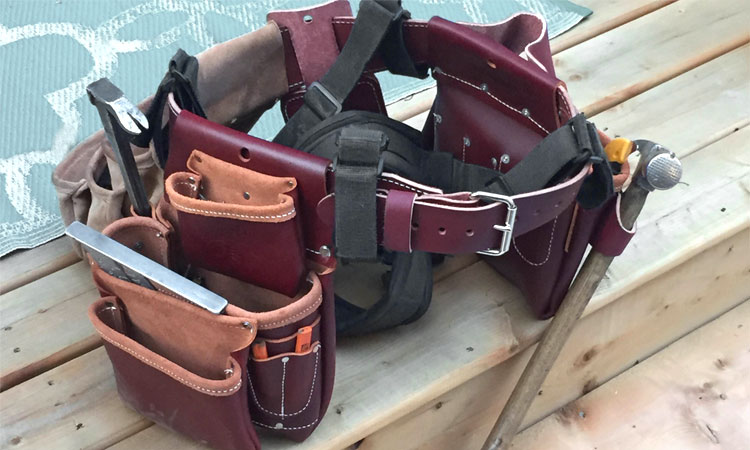7 Best Japanese Pull Saws for Flush Cuts and Dovetails
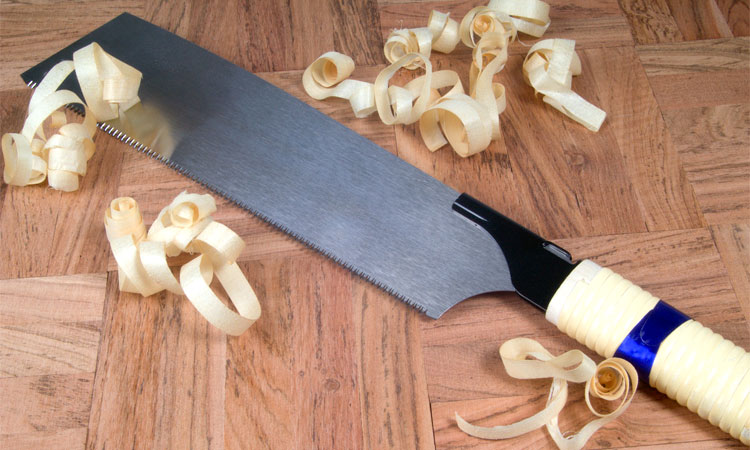
The Japanese have long held proper woodworking as an art form. Many temples and other wooden structures have stood firm for hundreds of years, even through earthquakes.
A major part of this comes down to working with the wood grain instead of against it. Another major part comes from using dovetails, dowels, or butterfly joints to avoid the use of nails entirely.
The best Japanese saw (or nokogiri) can run circles around the best American or European saws when it comes to precision work. This is in no small part due to the way the teeth are designed to cut on the pull stroke, resulting in a thinner, straighter kerf.
Owning a Japanese pull saw is a treat, and a properly maintained one can last for generations. Here are seven of the best pull saws Japan has to offer.
Our 7 Favorite Japanese Pull Saws
| Product | Style | Blade Length | Blade Thickness | Teeth/Inch | |
|---|---|---|---|---|---|
| Suizan Ryoba | Ryoba | 9.5" | .020" | 9 & 15 | |
| Gyokucho 372 | Dozuki | 9.5" | .012" | 20 | |
| Gyokucho 650 | Ryoba | 9.4" | .020" | 8 & 15 | |
| Suizan Dozuki | Dozuki | 6.0" | .012" | 25 | |
| Suizan Kataba | Kataba | 10.5" | .024" | 14 | |
| Z-Saw Dozuki | Dozuki | 9.5" | .012" | 26 | |
| Gyokucho 770-3600 | Ryoba | 7.0" | .020" | 9 & 19 |
Japanese Saw Reviews
#1 – Suizan Ryoba 9-1/2″ Japanese Pull Saw
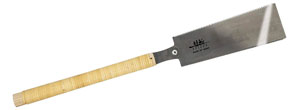
Once you get used to using a ryoba, this saw can cut faster and cleaner than many power tools. The higher tooth count and sharpness means you can crosscut with much less force. The crosscut side has a 15 TPI tooth count while the rip side has 9 TPI.
The long rattan-wrapped handle gives this saw an overall length of 24 inches, making it easy to shift your fulcrum as needed. The blade is stiff enough to be functional, while being flexible enough to be versatile.
A lot of customers have been surprised to see the teeth are heat treated. The process helps teeth keep a sharper edge for longer, but can also make them more brittle. Also, be sure to check for damage upon arrival, as the packaging is very simple.
>> Check current price <<
#2 – Gyokucho 372 9-1/2″ Dozuki Takebiki Saw
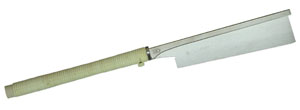
Its traditional rattan-covered handle provides a firm grip and allows for easy blade replacement. You can use this Japanese saw for a variety of cuts, including cross, dovetail, miter, and tenon with a smooth-as-glass finish.
You’re going to be hard-pressed to find a dozuki as good as the 372. Owners can’t stop boasting about the precision and quality of every cut, and the smaller number of teeth compared to other dozuki actually reduces the risk of catching.
Once you’ve used this saw, you might find it hard to go back to using a coping saw for your precision cutting.
>> Check current price <<
#3 – Gyokucho 650 9-1/2″ Double Edge Razor Saw
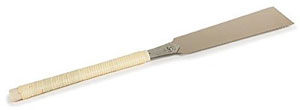
The teeth are impulse hardened for improved sharpness, and the handle uses a traditional rattan wrapping for improved grip and comfort. Its TPI is 14.9 for the crosscut side and 7.5 on the ripping side.
The smoothness of cuts by this saw has to be experienced to be believed. Due to the ultra-thin blade (0.02″), you can actually flex the saw to follow lines as needed. The overall quality has made this saw a true winner for most users.
Mastering a ryoba can be a little difficult for those used to push saws, and this has left some owners disappointed. Give it a little practice before giving up, as this is an excellent tool once you get used to it.
>> Check current price <<
#4 – Suizan 6-Inch Dozuki Pull Saw
Arguably the best Japanese pull saw for precision dovetail work, this dozuki has an incredibly thin kerf. The handle is wrapped in traditional rattan, making for a surprisingly comfortable grip. Additionally, the teeth are heat treated to retain their sharpness longer.
Owners of this dozuki love the ultra-thin kerf (0.016″) and ability to cut oak and other hardwoods with ease. A light grip is all that’s needed, and the shorter blade is perfect for beginners and experienced craftsmen alike.
Its 0.012″ blade has a 25 teeth per inch count will allow a finer and more accurate cut than most any other Japanese saw which makes it ideal for cuts which require the highest levels of precision.
The biggest problem users of this saw have are with the teeth. Heat treating may hold sharpness longer, but it can also make the teeth more brittle. Be prepared to buy replacement blades as needed.
>> Check current price <<
#5 – Suizan 10-1/2″ Kataba Pull Saw
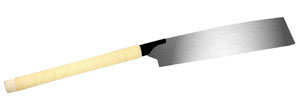
The hand-wrapped rattan handle provides superior comfort and the teeth (14 TPI) are heat treated to hold their sharpness longer. With an overall length of 23-1/2 inches, it’s the longest Japanese saw on our list.
It can be tough to find a good quality kataba, making this saw all the more impressive for fans of Japanese carpentry tools. Owners have used it to cut hardwood lumber of various sizes with ease, and the teeth arrive incredibly sharp.
If anything, the only drawback is that most beginners won’t need a kataba in their collection, making this tool more appealing to seasoned craftsmen.
>> Check current price <<
#6 – Z-Saw 9-1/2″ Dozuki Japanese Saw
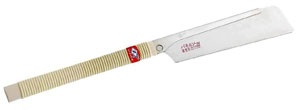
Nothing rips like a well-made dozuki. This one by Z-Saw boasts a tensioned high carbon steel blade with 26 teeth per inch and a blade thickness of only 0.012 inches.
The bamboo-wrapped handle is a dream to handle, and the 9-1/2 inch, 2-3/8 inch tall blade won’t bend, thanks to its rigid back.
This saw cuts extremely well, and has served its owners in a wide range of tasks. It has just enough flexibility to aid in cutting without the risk of bending off the line. The overall quality is also excellent, making this an excellent dozuki for beginners.
While misuse can cause teeth to wear or break prematurely, there is some evidence that a small percentage of consumers have received their’s refurbished. Be sure to examine the saw thoroughly upon arrival to ensure you’ve gotten a new one. Also, be aware that this saw isn’t good for making blind cuts.
>> Check current price <<
#7 – Gyokucho 770-3600 7-Inch Ryoba Saw
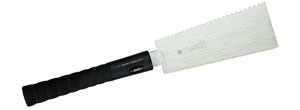
Unlike traditional ryoba, this version features a handle which can be tilted or rotated to allow for cuts in difficult to reach spaces. All of the teeth on the 7-inch blade have been impulse hardened to help prevent dulling.
Using the 770-3600, many owners have noted it outperforms their powered saws in both speed and accuracy. The cuts are extremely clean, and it works equally well on just about any type of wood. The low cost and overall quality make this saw an excellent gift idea.
The key feature of this saw is also its main weak point. Several users have complained that the handle becomes loose after several uses, resulting in problems retaining the blade. While this hasn’t happened to every user, it leaves room for some concern.
>> Check current price <<
Japanese Pull Saw Guide
As mentioned, a skilled Japanese craftsman avoids metal nails and screws, building almost entirely from joint work. Besides the specialized kanna (plane) and nomi (chisel), a good nokogiri (pull saw) is essential to woodworking.
There’s a lot to learn about Japanese saws and their uses, and a bit of a learning curve when actually using one, but here’s an overview to get you started.
See Also: 19 Different Types of Hand Planes
Types of Japanese Saws
There are several types of nokogiri, each of which has its own special uses. Most can be classified into either kataba or ryobi styled blades.
Anahiki
Designed primarily for general construction work, the anahiki is a beam or log cutting saw that can be used on both green and seasoned woods. In a workshop, it can be used for rough-cutting pieces of rough-sawn lumber.
Azebiki
This short, curved-blade saw is usually available as a ryoba-style. It’s most often used for starting cuts in the center of a panel. It can also access tight spots more easily due to the shorter blade length.
Dozuki (“tenon”)
This kataba style saw has a stiff spine which ensures straighter cuts at the cost of depth. It’s the most popular nokogiri for both hard and soft woods, and has some tooth similarities to a crosscut saw.
Kataba
This is a single-edged saw that is perfect for general-purpose use. The lack of a back means it can make deeper cuts, although the blade itself is thicker. Its teeth are filed for ripping and crosscuts. The ripping version may include a set of smaller starting teeth at the rear and larger teeth towards the tip to allow for faster cuts.
Kugihiki (“to cut nails”)
The teeth on this saw have no set, allowing it to flush-cut wooden nails or dowels. The tip is thinner and more flexible to allow flush cuts at odd angles with less risk of damaging the surface, while the rear is thicker to allow for more aggressive cuts.
Mawashibiki (“turning cut”)
This narrow, thick-bladed saw is ideal for cutting curves and keyholes.
Ryoba (“double-edged”)
These saws have cutting teeth on both sides of the blade. One side is generally filed for crosscutting, while the other side are used for ripping. On some ryoba, the teeth on one side will be used for hardwood and the other softwood.
The blade is thinner in the middle to help prevent binding, and the number and size of teeth will vary based on the blade length
Sokomawashibiki (“bottom”)
This curve-cutting saw was originally used for crafting the bottom of wooden buckets, hence the name. The curvature allows you to cut curves in both hardwood and softwood.
How to Use a Japanese Pull Saw
Many of the techniques you use for Western saws can also be used on a nokogiri. You will want to grip further down the handle (the exact pivot point will vary from person to person), and starting a cut should be done with the rear of the blade, since the saw works on the pull stroke.
Always start off slow and gentle, building speed and pressure slowly to avoid a jam. You will also want to finish off slow and gentle to prevent splintering.
As with other types of saws, you want to store you nokogiri in a dry place, as the blade can rust and avoid trying to cut on the push, as this can break the teeth.
Can You Sharpen a Japanese Saw?
The answer to this depends largely upon whether or not the teeth were impulse-hardened. Hardened teeth cannot be resharpened, as they are harder than the feather files. Feather files are available in a few sizes, but 3 (for dozuki) and 4 (for ryoba).
Clamp your saw in a vise and sharpen every other tooth with the feather file. It will take three to four pushes per tooth, unless severely damaged. Then, flip the saw and file the remaining teeth.
As a finishing touch, file secondary bevels to kelp prevent breakage along the tips.
Japanese Saw vs Western Saw – What’s the Difference?
The most obvious difference between the two styles is the handle. Nokogiri tend to have longer handles and the blades often resemble that of a machete or chisel in shape, whereas Western saws usually have a grip handle and long blade that tapers slightly or has an attachment point at the far end.
Another huge difference is the direction of the teeth. Western saws are designed to cut on the push stroke, whereas nokogiri cut on the pull stroke. While the latter seems counter-intuitive to those used to Western carpentry, nokogiri can become a fast favorite due to the precision and control they offer.
It’s interesting to note that some of the best pruning saws are also made in Japan and do most of their cutting on the pull stroke.

